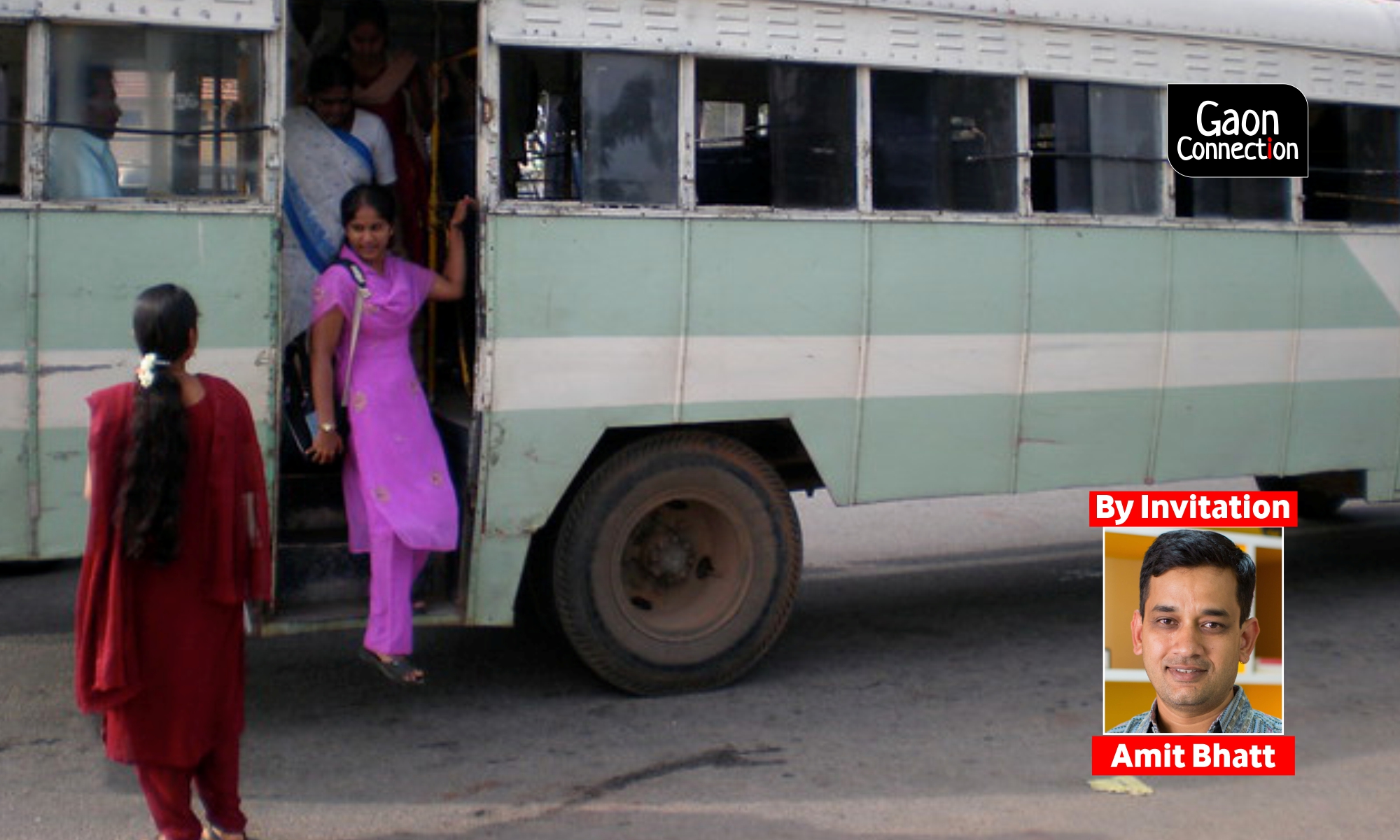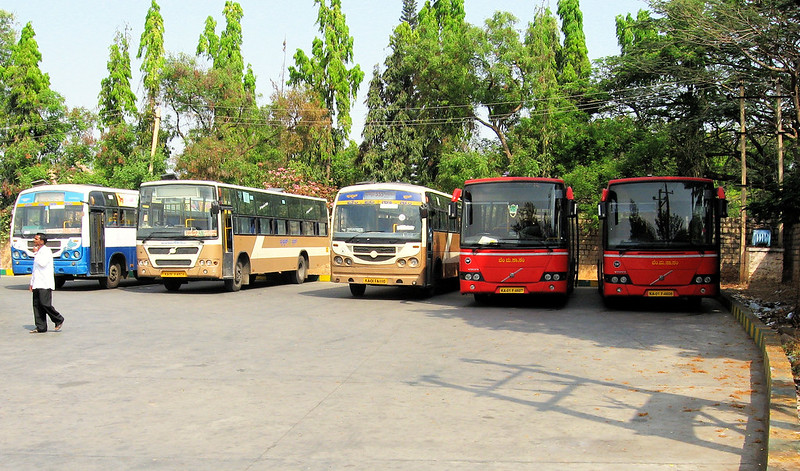India, Bus Karo. Five steps to revive bus transport in India amid the coronavirus crisis
It is estimated that in 2020, bus transport in India – the lifeline of the country -- will lose around Rs 1.5 lakh crore due to the ongoing COVID crisis. Here are five steps to revive the bus transportation


Road transport accounts for 85% of all passenger trips in India, including air and water transport. Bus transport accounts for 85% of this share. Therefore, one can safely say that buses are the lifeline of the country. However, the ongoing COVID crisis has dealt a massive blow to mobility, be it metro, trains, autos, or ride-hailing services like Uber and Ola. But, the most significant impact has been on the bus transport segment due to the reduced need and increased fear of contamination. It is estimated that in 2020, bus transport in India will lose around Rs 1.5 lakh crore due to the ongoing coronavirus crisis.
Apart from providing access to opportunities, buses also help reduce congestion, emission, accidents, and ensuring equity in mobility. Therefore, as the country moves from the lockdown to the recovery and eventually to the new normal phase, it cannot do without buses. Here are five steps to revive and strengthen bus transportation in India, but more so in cities.
Belief
In India, buses form only 0.75% of the registered motor vehicle fleet, yet they transport 75% of all public transport trips. The data clearly shows the importance of buses in India. However, when it comes to supporting, buses are not always the preferred mode of transport, especially in the city transport system. It is estimated that there are 18 lakh registered buses in the country, but only 35,000 buses are under urban operation. That’s not all. Sixty-five per cent urban buses operate in nine cities with a population of over 40 lakh. The lack of quantity and quality of buses has led to an uncomfortable and unsafe operation of buses. The result is the growth of personal motor vehicles. Therefore, it is time that the country shows more belief in the bus system.

Operate
It is estimated that there are 18 lakh registered buses in the country, out of which 1.5 lakh are with public agencies. This means that 92% of buses are with the private sector. The bus transport sector employs around 75 lakh people directly. This means that around three crore family members are dependent on buses for their livelihood. However, the ongoing COVID crisis has put about 95% of buses off-road. This is causing extreme hardship for the operators and their families. But that’s not all; buses are the predominant mode of transport in our cities. They are needed for economic revival. Everyone using personal transport is neither technically not financially possible. Therefore, cities need to operate the public transport system.
Improve
The fear of contamination due to the ongoing COVID crisis is why cities need to rebuild safe, smarter, and more efficient bus systems. A bus commuter has three main contact points – bus stops, ticket counters, and the vehicle. All these three points need to be safe from the COVID perspective. Earmarking safe waiting space with regards to social distancing at the bus stop, switching to digital and paperless ticketing, and reducing overcrowding inside the bus will surely improve the safety of travellers. However, the most significant benefits will come from improving the frequency of services. Therefore, cities that had curtailed the bus transport services to contain the virus spread now need to improve the services.

Support
The bus transport sector has been struggling financially, even before the COVID outbreak. As per the WRI India’s estimate, India needs an investment of Rs 2.3 lakh crore by 2031 for building a high-quality bus system. The current COVID crisis has aggravated the problem even further because, right now, it is the survival of public transport, which is at stake. According to the Bus and Car Operators Confederation of India (BOCI), banks and other financial institutes finance around 7 to 8 lakh buses. Many operators are availing the moratorium, but after six months, they will have to pay back with interest, and that’s where the problem will start. Reduced occupancy and restricted operation are severely impacting the cash flow. In fact, there is a real danger that these may turn into non-performing assets (NPA). Therefore, it is time to support the bus system by rationalizing taxes, tolls, and permit regulations. Adding private sector fleet in city operations will help both citizens as well as the operators.

Communicate
A large section of our society will use public transport, COVID or no COVID, because they can’t afford any other means of transportation. However, our cities need to assure them about their safety. One way to do that will be to launch and communicate around a COVID safety labeling program for transport. Under this program, the government must develop a Standard Operating Procedure (SOP) for transport operations. These SOPs must contain does, and don’ts for transport agencies, workers, and passengers and must be communicated to the people at large, something like the hand hygiene initiative. It will help to reinstall people’s faith in public transport and also help save the lives of people.
There is not enough evidence that public transport has played a significant role in COVID19 transmission and some of the global research points in the other direction. Hong Kong, which has about 13 million riders per day on its transit system, has not a very significant decrease in its usage due to the COVID crisis. Yet, it has recorded only 1,100 COVID cases and Delhi, with all the travel restrictions, has around 50,000 cases. Similarly, cities like Milan, which have reopened public transport, have not seen a spike in the infection. The same is also seen in Japan. Similarly, the information from Seoul, South Korea, around tracing post-peak outbreak reveals that the transmission did not happen due to public transport but lack of social distancing at reopened night clubs.
Public transport is the lifeline of our cities, so it must operate. Yes, it does need a certain level of safety protocols until the cure or vaccine for COVID is found. However, this does not mean an extensive setup. A simple hygiene culture for passengers like wearing masks and washing hands before and after the trip, contactless payment, improved services will do a lot of good for the city and the citizens.
The fear of public transport as a carrier of COVID has got ahead of the evidence. Therefore, it’s time to break the chain by using the COVID crisis to create a new public transport culture in the country. So, India – Bus Karo.
Amit is the executive director (urban transport) at WRI India. He is based in Delhi and provides vision and leadership to all transport initiatives across WRI in India and neighbouring countries.
(Views are personal)

